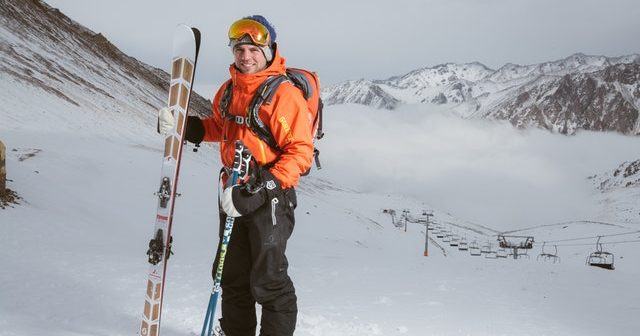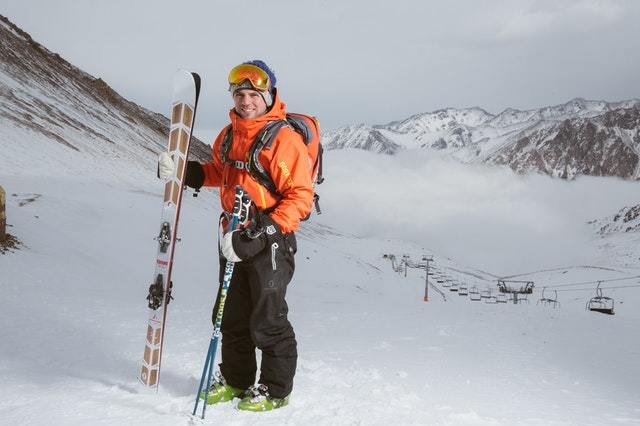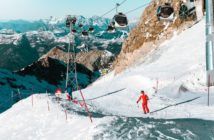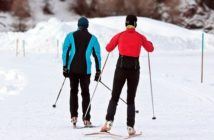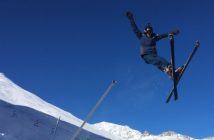Learning how to ski is as thrilling as it is terrifying. The first time you manage to strap a ski boot to your foot, you’ll feel as though you’ve conquered the world (they’re tough little buggers, if you’ve never worked with them before).
Then you face down the hill. That’s where the real trouble begins.
Even though we’re learning new things on a daily basis, it takes guts to admit that you need help. Asking for beginner ski lessons is no different.
They’re especially great if you’ve never strapped yourself to two pieces of polished wood and gone charging down a mountain before. That might sound dramatic, sure – but it’s the truth.
So, when first learning to ski, how many ski lessons should you take? Let’s dive into the semantics of learning to ski, so you can make the best decision for yourself.
Contents
How Many Ski Lessons Should I Get as a Beginner?
Beyond learning the proper technique, ski lessons help train your body. Your muscles aren’t used to the motions they need to go through to safely maneuver you down a hill.
As such, there’s no set number of lessons you must undertake. The right number will vary based on the kind of person you are. If, after one lesson, you feel confident moving off the bunny hill, go for it!
If you feel you need three, four, or five lessons, there’s nothing wrong with that. It’s better to take multiple lessons, just to be safe, rather than putting your body at risk.
Different Learning Methods
The good news is that there are a number of different ways to learn skiing. The majority of them require slopes, of course (though this guide will touch on different types of skiing later).
If you live in a warmer climate or want to experiment with different teachers, why not explore the skiing options in your area?
Learning to Ski on Fake Slopes
While synthetic slopes aren’t the most popular type of hill, they do exist, and they serve as excellent training grounds for potential skiers. These slopes are coated with plastic-based snow and other plastic matting surfaces.
Because they don’t rely on water or the environment to function, these slopes are accessible all year round, regardless of the weather. As a result, they’ve earned the name “dry slopes.”
When practicing skiing on a dry slope, you’ll likely encounter one of the following materials:
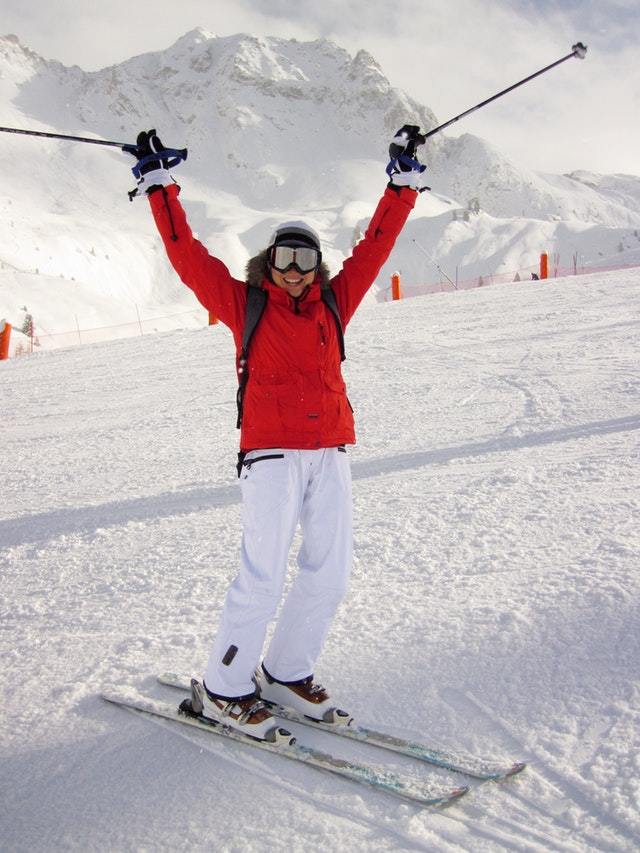
- Dendix – A PVC-based material designed back in 1961. This material is excellent for would-be race skiers, due to its smooth nature. However, it does take some getting used to, and the transition between it and traditional snow is tough to navigate.
- Snowflex – An evolution on the PVC material, 40 years in the making. Snowflex abandoned Dendix’s hexagonal arrangement in favor of a polymer fiber. This surface is more akin to carpeting than it is actual snow, but it still serves fake slopes well.
- Nevaplast – The Italians developed their own alternative to Dendix in 1998 to better address concerns about the original material’s safety. Nevaplast is now used in terrain parks, as well as on practice slopes. It’s considered better than Dendix, but worse than Snowflex as a riding material.
Pros
So, why would you want to ski on fake slopes made out of plastic? There are a number of benefits, including:
- Lessened chance of an accident while initially finding your feet.
- No danger of the weather impacting your ability to ski safely.
- You can better experiment with hill size, thanks to the versatility of human-made ski parks
- A beginner’s environment, where more people are trying out their skills and honing their abilities.
Cons
Nonetheless, there are some downsides to these types of hills, including:
- You’re more likely to come home from these practices with carpet burn, rather than frostbite.
- You’re not exposed to the fresh air and snow (which can be half the fun).
- Transitioning from an indoor park to actual slopes can take time and additional practice.
This video shows an example of ski lessons on fake slopes.
Learning to Ski at a Resort
If the idea of a synthetic slope is off-putting, don’t worry. You can just as readily learn to ski at a resort. There are a number of benefits to resort learning, which you can’t find at a year-round dry slope.
Pros
- Many resorts offer group lessons for new skiers.
- New skiers may be offered specific cost packages that make a trip to the slopes more affordable.
- You can better adjust to skiing on actual snow and in actual weather conditions.
Cons
- You’ll have to keep a closer eye out for icy patches on real slopes, along with other environmental obstacles.
- Because ski resorts are more traditional environments for skiers and snowboarders, you’ll encounter longer lines for ski rentals and lessons.
- You’ll only be able to receive lessons during the winter season when snow is available.
Are Online Ski Lessons Worth It?
Thanks to the Internet’s prevalence, there is also a third option for those of us looking to learn skiing: online lessons.
You can learn how to ski without ever leaving your home. There are a number of programs operating online that will teach you the basics of ski mechanics, along with the common mistakes beginners tend to make.
However, it’s worth noting that online ski courses tend to focus on the theory of skiing, as opposed to the practice. If you’re feeling nervous about hitting the slopes, these lessons are great for assuaging your initial fears.
However, note that online ski lessons do not – and should not – replace in-person lessons. Even if you take an online course, it’s important to practice your skills with a professional in the snow.
After all, a real instructor (whether they’re on a snowy slope or a dry slope) can give you the personalized help that a web course can’t.
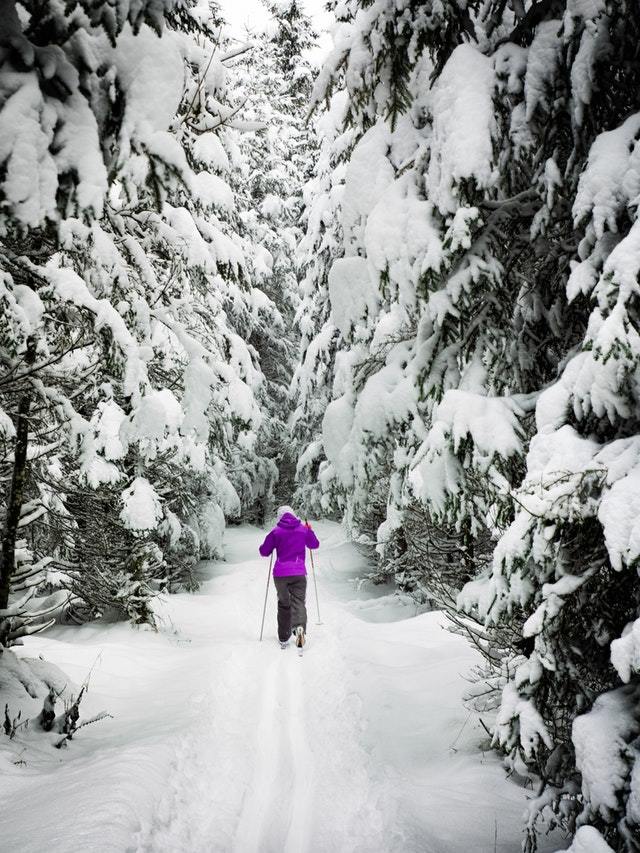
When Do I No Longer Need Ski Lessons?
Once you’ve spent time with an instructor and have experimented with your confidence on the slopes, you’ll likely wonder: how many lessons do I need to ski successfully? Am I “done?”
The answers vary. Like we’ve said: all beginning skiers should spend time practicing and receiving in-person lessons, so they can maneuver safely down a snowy hillside. Deciding when you no longer need lessons, however, is entirely up to you.
Do note that your first time on a ski slope won’t reflect your entire experience with skiing as a sport. No one is good at a new skill the first time they try it.
You can continue taking lessons until you feel that your experience is well-rounded. After that, you can forgo lessons in favor of learning on your own. Alternatively – as we’ll touch on later – there are lessons you can take that’ll improve your ability to ski in the long-run.
In short: go with your gut. If you’re not feeling confident, check in with your ski instructor. However, note once again that online ski lessons do not substitute for the lessons you’ll receive on dry or real slopes.
You should absolutely spend time on an actual hillside, with an instructor, before attempting to make your way down a regular hill.
How Long Does It Take to Become a ‘Good’ Skier?
There’s a difference, of course, between “no longer needing lessons” and skiing well. If you have a fair amount of lower body strength, you may find that you can make your way down a hillside with little to no problem at all.
However, being able to reach the bottom doesn’t necessarily mean you’re ready to hit a Black Diamond.
Determining whether or not you’re a “good” skier takes time, and will depend on your skill set and experience. Naturally, the longer you take lessons, the better you’ll get.
Likewise, skiers who can spend every weekend on the slopes will be better than skiers who can only make it to a resort once a month – if that.
If you’re looking to hit the goalpost of “good,” it’s important to define what that means for yourself. To start, make sure you can reach the bottom of a hill safely, without falling, and while having a good time.
Whether you’re looking to ski for sport or to spend time with friends, it’s the “for fun” part of the practice that really determines how well you’re doing.
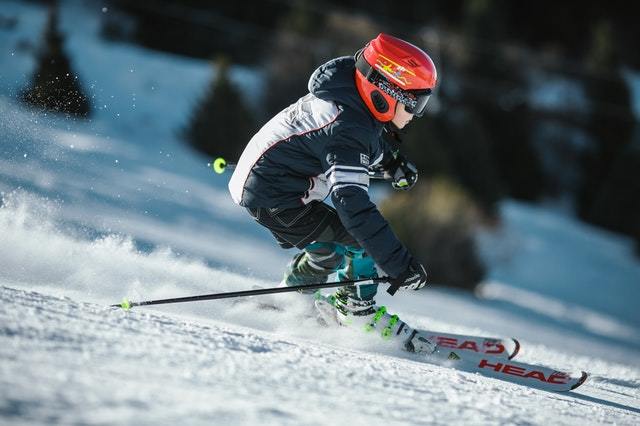
Other Times When Ski Lessons Are Useful
Ski lessons aren’t only for beginners. Those with prior experience, or who considered themselves cutting-edge quality in the past, can benefit from new lessons.
After all, kids’ ski lessons, refresher courses, or a group lesson can help you better enjoy the mountain in every situation.
Where do you start?
You can take ski lessons to learn more about any of the following types of non-traditional skiing:
Off-Piste Skiing
“Off-piste” is a French term, which refers to skiing that takes place outside of a groomed park.
This means skiing past trees, over hidden rocks, and along the side of a mountain. Sound like something you want to do? Then you’re going to need to take lessons.
As you might imagine, there’s a significant difference between skiing a groomed slope and heading out into the wilderness. While no one can control the weather, skiing off-piste puts you alongside the unrelenting environment. It’s raw, it’s real, and it’s fun – but it can also be dangerous.
Ski lessons will help you adapt to the new environments. You’ll also learn what kind of equipment to bring along, so you can better handle the varying terrain.
Key skills you’ll need for off-piste skiing include:
- Blocking pole plants.
- Hop turns.
- Kick turns.
Park Skiing
You can also take extra ski lessons to begin learning ski tricks. Much like snowboarders or skaters, you can spend whole days in a terrain park, grinding on rails, flying over jumps, or taking leaps of faith into deep piles of snow.
You can’t do any of these things, however, if you haven’t practiced them. If you do, you risk serious injury to yourself or others. However, if you have an instructor walking you through the basic skills for a daffy butter, worm turn, or j-walk, then you can walk into a terrain park feeling confident and safe.
Note that, when it comes to tricks, many skiers tend to learn from their friends. While this is a perfectly serviceable way to learn the simpler tricks, make sure you work with a professional before trying something that takes you too far outside of your comfort zone.
Technical Skiing
What’s the difference between technical skiing and normal skiing? While the two practices have the same basic structure, technical skiing demands far more rigorous attention to detail. Technical skiers are professionals who can expend less energy on the slopes than beginning skiers.
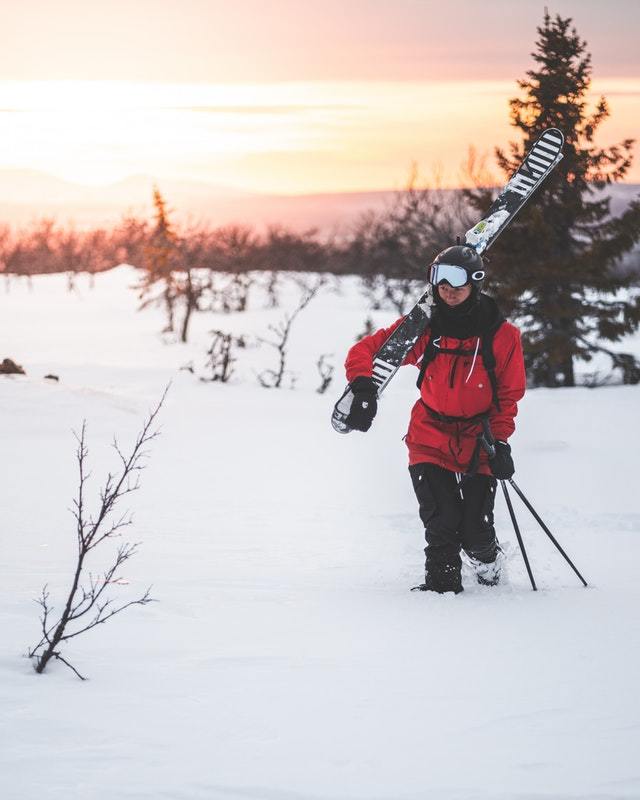
If you want to get into professional skiing, then it’s wise to sign up for technical skiing lessons – immediately. After all, casual skiing is fine, but it leaves room for bad habits to develop.
Learning these practices early will help keep you from unlearning old, inefficient techniques!
Cross Country Skiing
You may also want to go cross country skiing. There are few practices that differ so significantly as cross country skiing and downhill skiing.
While you can rely on gravity to take you to the bottom of a hill, cross country skiing demands a whole different set of muscles and techniques.
Whether you’re traveling on groomed trails or through the backcountry, you’ll need cross country skiing lessons to make it more than a quarter of a mile.
This video goes into more detail on cross country ski lessons.
Note that this practice – and the others mentioned in this guide – are all physically demanding. Don’t expect to be a pro the first time you fit your boot into a ski. However, the longer you practice (and the more lessons you take), the better you’ll get.
Skiing is a talent that doesn’t come naturally to many. Most likely, you will take a number of lessons before feeling comfortable on a downhill slope. Once you find your feet, though, the hobby will open up to you, and you’ll be able to explore all of the variations therein.
What type of ski lessons are your favorite?

